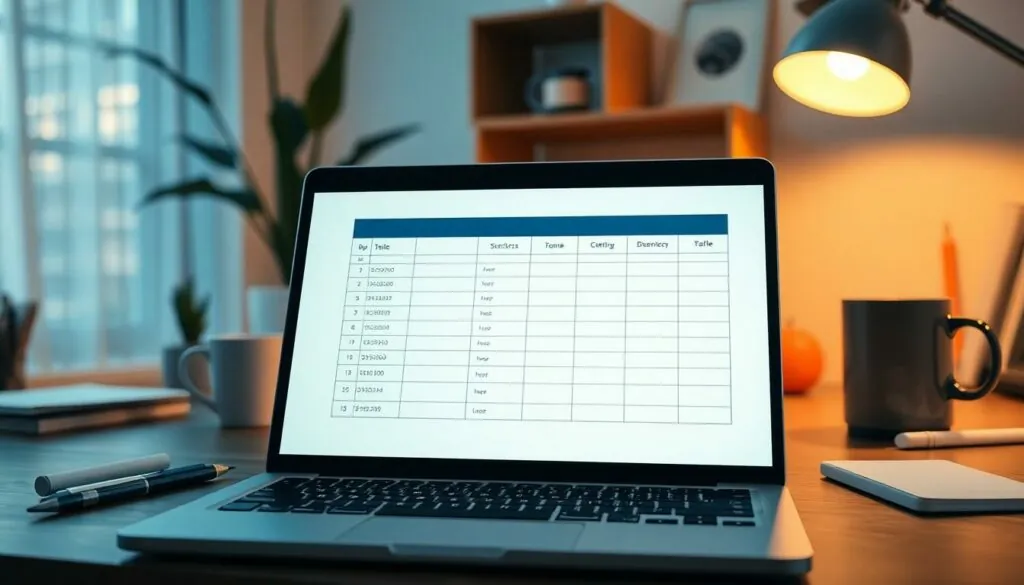Table of Contents
ToggleCreating a table in ChatGPT might sound like a task reserved for spreadsheet wizards, but it’s easier than you think. Imagine transforming your text into a neatly organized table without needing a degree in computer science. It’s like magic—only without the top hat and rabbit.
Overview of Tables in ChatGPT
Tables in ChatGPT provide a structured format for displaying information clearly. Users can present data in rows and columns, facilitating easy comparison and comprehension. Creating a table involves simple markdown syntax, allowing anyone, regardless of their technical background, to utilize this feature.
Designing a table starts with defining the headers, which indicate what each column represents. Afterward, rows fill with data, maintaining organization and clarity throughout the presentation. With a concise format, tables help emphasize key points, making information more digestible.
Integrating tables into discussions or reports enhances readability. Formatted data captures attention and encourages engagement. When data sets appear organized, readers grasp trends and relationships without unnecessary confusion.
Inserting a table requires specific markdown elements, including vertical bars and hyphens for separation. Clarity increases with the correct application of these elements. Example tables may illustrate numerical data, statistics, or lists, providing an efficient means to communicate complex information.
Using tables effectively streamlines discussions and helps convey messages with precision. Readers appreciate the clarity and organization that tables bring to the information presented. Utilizing this feature not only organizes content but also elevates the overall quality of the presentation in ChatGPT.
Getting Started

Creating tables in ChatGPT starts with accessing the platform and understanding the functionality behind tables. Once users familiarize themselves with this process, they unlock a new tool to display information effectively.
Accessing ChatGPT
Visit the official ChatGPT website to access the platform. Signing in to an account is necessary for full functionality. After logging in, users can engage with the chat interface seamlessly. Users can start a new conversation by simply clicking the designated button. With this easy access, users are ready to explore the table creation capabilities the platform offers.
Understanding Table Functions
Tables serve as a powerful means to organize and present information. They help compare various data points in a clear format. Each table consists of headers and rows to maintain order. Users can add multiple entries under each header to illustrate relationships between data points. Simply utilizing the correct markdown syntax ensures tables remain organized and visually appealing. Well-constructed tables can enhance communication, making complex information easier to digest.
Step-by-Step Guide
Creating tables in ChatGPT involves straightforward steps that enhance the presentation of data. Users can follow these instructions to effectively build their tables.
Creating a Basic Table
Markdown syntax is essential for building a basic table. Start with the headers that describe each column. Place vertical bars before and after each header to separate them. For example:
| Header 1 | Header 2 | Header 3 |
|----------|----------|----------|
This format sets the groundwork for how data will be organized. It’s important to use a minimum of three hyphens under each header to indicate the division between headers and data.
Adding Rows and Columns
Users can easily add rows beneath the headers by continuing to use vertical bars. Each row must align with its corresponding header. For example:
| Row 1 Data 1 | Row 1 Data 2 | Row 1 Data 3 |
| Row 2 Data 1 | Row 2 Data 2 | Row 2 Data 3 |
Adding columns follows the same principle, just insert more vertical bars aligned with the existing headers. Consistent alignment ensures clarity and improves readability.
Formatting the Table
Formatting plays a vital role in table appearance. Users can enhance readability by centering or left-aligning text within the table. To achieve this, use colons in the header row. For instance:
|:---|:---:|---:|
This method aligns the text left, centers it, or right-aligns it based on the placement of colons. Clear formatting helps messages stand out, making information easier to digest.
Advanced Table Features
Advanced features in table creation elevate the presentation and usability of data in ChatGPT. Options like merging cells and adding borders enhance both aesthetics and functionality.
Merging Cells
Merging cells helps create a unified header or section within the table. This feature allows users to combine multiple adjacent cells into one, making the table visually appealing. To merge cells, utilize the appropriate markdown syntax. It typically involves adjusting the number of vertical bars, making space for the merged content. For example, instead of multiple columns, a single cell spanning across them can convey overarching themes or categories effectively. Merging cells streamlines the look of a table, emphasizing key data without clutter.
Adding Borders and Colors
Adding borders and colors significantly improves the table’s readability. Users can implement borders around cells for clear delineation of data. While traditional markdown doesn’t support colors, some platforms may allow custom styling through HTML or additional markdown extensions. Designers can strategically choose colors for headers or specific cells to highlight important information. Subtle shading or contrasting colors enhances visual appeal, guiding users through the data more efficiently. Applying these enhancements helps readers process information quickly and keeps tables organized.
Tips for Effective Table Creation
Utilize clear headers to define the purpose of each column. A well-labeled header enhances the comprehension of the content within the table. Strive for consistency in data types across each column to maintain clarity and avoid confusion.
Incorporate ample spacing between rows for improved readability. This approach makes it easier for users to scan the data and locate pertinent information quickly. Prioritize the use of vertical bars to separate cells clearly, ensuring that the visual structure remains intact.
Consider using alignment techniques to emphasize important data. Aligning text to the left, center, or right allows users to focus on specific elements, enhancing data accessibility. Add borders sparingly to differentiate between sections while keeping the table visually appealing.
Additional rows and columns can significantly enhance data representation and offer deeper insights. Introduce them thoughtfully based on the requirements of the displayed information, ensuring that the table doesn’t appear cluttered or overwhelming.
Apply color or shading when applicable to highlight key data points. While traditional markdown may lack color support, certain platforms offer the possibility to style tables with colors that capture attention without sacrificing professionalism.
Merge cells for combined headers or important sections to provide a cleaner look. This technique unifies the visual presentation and emphasizes critical areas effectively.
Evaluate the overall appearance of the table for coherence and organization. A well-structured table not only conveys information clearly but also serves as an engaging tool for users to interpret and analyze data effortlessly.
Creating tables in ChatGPT opens up a world of possibilities for users looking to present information clearly and effectively. With simple markdown syntax anyone can transform plain text into organized tables that enhance readability and comprehension.
By following the straightforward steps outlined in the article users can easily define headers and fill in data to maintain clarity. The added features like merging cells and incorporating borders elevate the visual appeal of tables making them engaging tools for data presentation.
Ultimately utilizing tables in ChatGPT not only streamlines communication but also allows users to convey complex information in a digestible format. This skill can significantly enhance discussions and reports making it a valuable addition to anyone’s toolkit.








